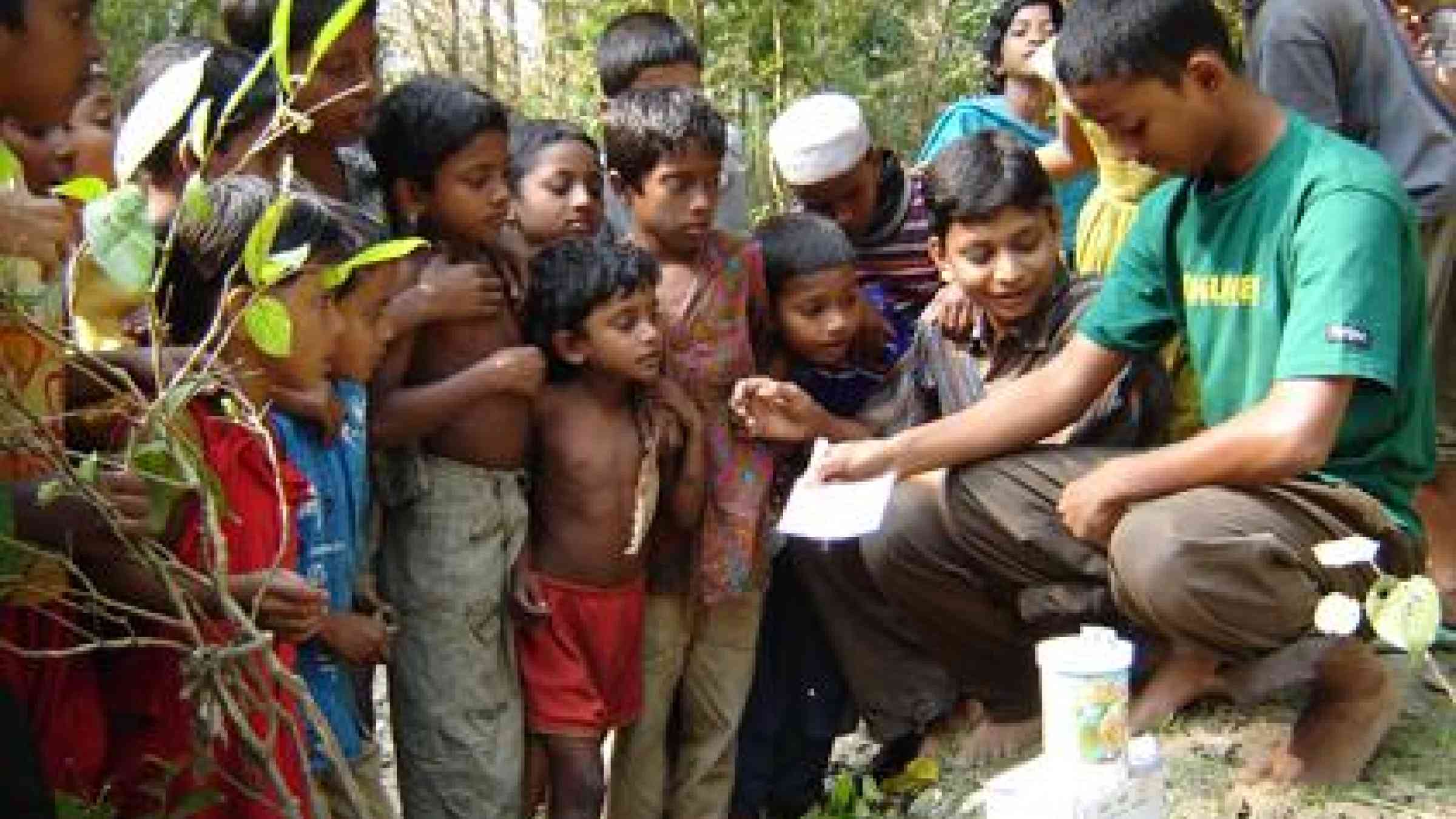Knowledge for life on the Bangladesh coast

EAST SUJONKATHI, BANGLADESH, 8 October 2015 - A small community on the disaster prone coast of Bangladesh is translating the Sendai Framework for Disaster Risk Reduction into the local dialect as part of an ongoing community revival since it was hit hard by Cyclone Sidr in 2007.
The death toll from Sidr may have been as high as 4,000 and it caused £450 million worth of economic losses.
At the centre of these resilience-building activities, based on use of local and traditional knowledge of disasters and the environment, is the work being done with children attending East Sujonkathi primary school’s Somaj.
There the children are encouraged to volunteer in efforts to reduce the 3,000-strong community’s vulnerability to disasters and have been provided with name cards for all the trees and plants in the district where a ban has been introduced on cutting down trees.
Situated in the vulnerable coastal zone of Goila, Barisal district, the community is exposed to frequent cyclones, tropical storms, floods, salinity, water shortages, drought, cold waves, all partly propelled by climate change.
In addition to losses from natural hazards, the community had suffered damage to its ecosystem and arable lands through overreliance on pesticides and overlooking traditional knowledge and wisdom in farming practices.
The community had also been suffering from a host of other problems including a lack of proper disaster forecasting, no local level disaster risk reduction plan, use of wrong housing materials, and a poor approach to tree plantation.
Immediately after Sidr in 2007, the community conducted a post-disaster analysis and developed a local level disaster plan including a community based early warning system.
The community has empowered a dedicated team of volunteers who disseminate disaster information about risks and disaster response through folk culture, songs and the use of stories and traditional proverbs. It is also experimenting with combination of traditional housing methods and modern building techniques.
The engagement of youth and children, the local primary school and managing body were key to these efforts. Concrete actions have improved the availability of water including reducing pollution, protecting fisheries, and conservation of flora and fauna with an eye on restoring biodiversity. Regular “seed fairs” take place to encourage exchange of varieties between growers.
The community is now working on the idea of creating a local inclusive platform for disaster risk reduction following its experience of making submissions to regional consultations for the Sendai Framework for Disaster Risk Reduction which was adopted earlier this year as a global blueprint for reducing disaster losses at the Third UN World Conference on Disaster Risk Reduction.
It is also formulating the local guidelines to oppose any development initiative in the locality unless the initiative fully complies with the Sendai Framework.
Md. Zakir Hossain of Krisoker Sor (Farmers’Voice), who is acting as the facilitator of the community’s efforts said: “It is challenging to make sense of the chaos which often exists in conventional development discourses, but not impossible. You have to nurture the community’s emotional attachment to the activities necessary to build resilience. Only then, is it possible to explore and utilize the inner strength of the community to guide them towards the moments of happiness.”
This submission for International Day for Disaster Reduction promoting local, traditional and indigenous knowledge was received from Shaila Shahid Team Leader, Gender and Water Alliance Programme Bangladesh (GWAPB).